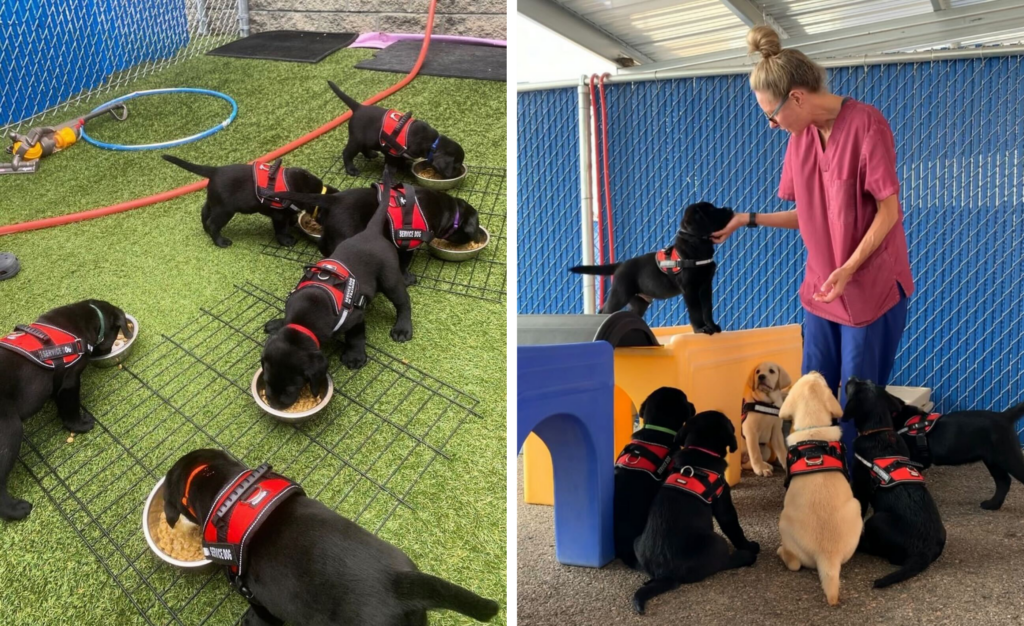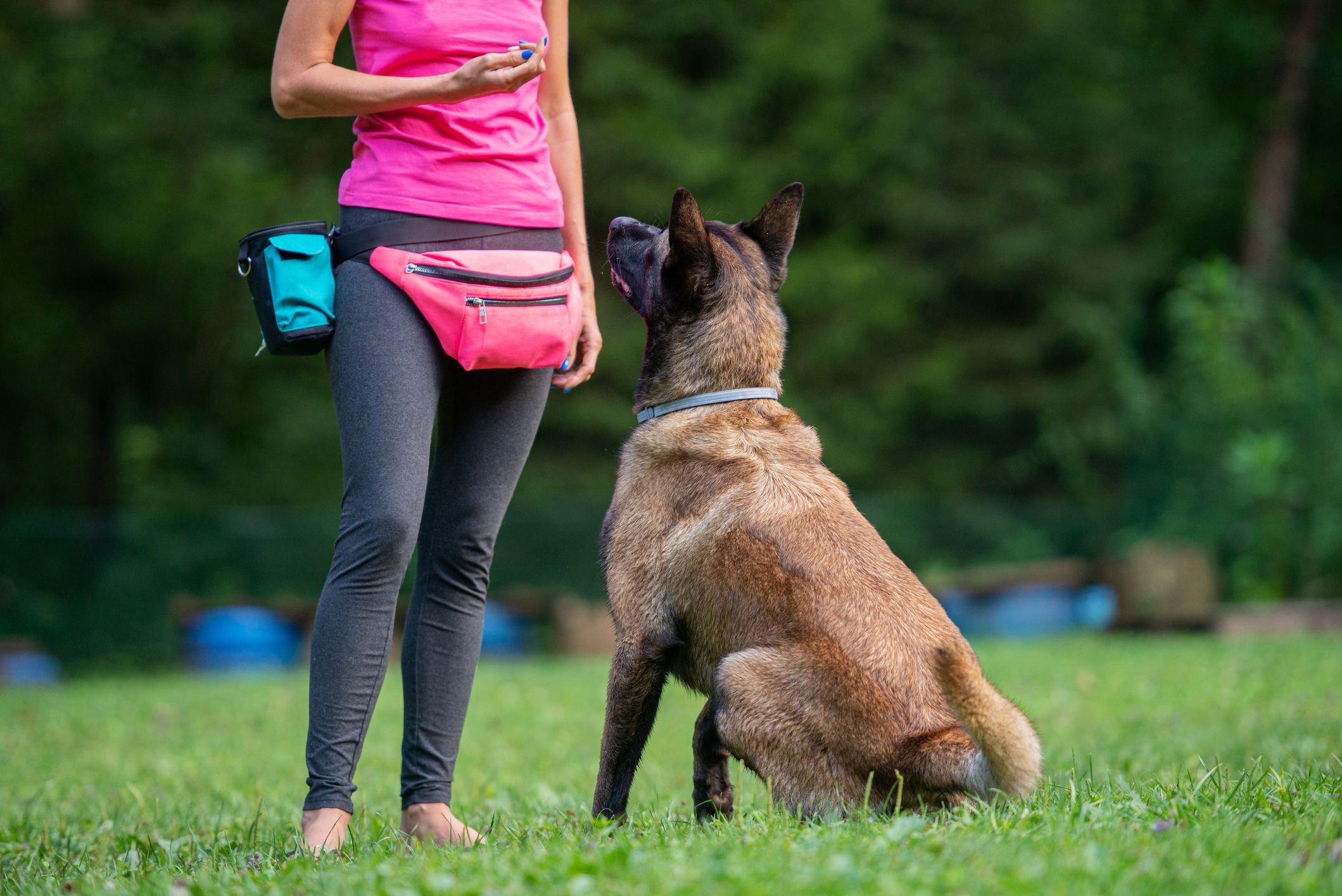Newbie's Overview to Successful Pet Dog Training in your home
Effectively educating a pet dog in your home requires a nuanced understanding of canine habits and efficient communication strategies. Establishing clear training objectives, using high-quality incentives, and preserving consistency across member of the family are vital components. Incorporating training right into daily regimens can boost both involvement and retention. Numerous newbie trainers encounter difficulties that may impede progress. To navigate these complexities efficiently, it's vital to check out a number of vital aspects that can transform your technique and lead to a harmonious partnership with your animal. What essential concepts should every beginner grip to ensure success?
Comprehending Pet Dog Actions
Understanding pet dog behavior is important for efficient training and cultivating an unified partnership between human beings and their canine friends - Puppy Training. Dogs communicate mostly through body movement, vocalizations, and faces, making it essential for proprietors to interpret these signals accurately. Recognizing actions such as tail wagging, growling, or cowering can supply understandings into a dog's emotional state and objectives
In addition, recognizing the natural impulses of pets, such as their pack mindset, aids owners establish leadership roles within the house. This is important for developing a structured atmosphere where pets feel secure and are much more responsive to training. Canines are also influenced by their socializing experiences; early exposure to numerous atmospheres, people, and various other animals can substantially form their habits later in life.
Common behavioral concerns, such as aggressiveness, anxiousness, or excessive barking, often stem from misconceptions or unmet needs. Observing and resolving these concerns immediately can prevent escalation and guarantee a positive training experience. By fostering a deep understanding of pet dog habits, proprietors can customize their training methods to suit their canine buddies, eventually leading to a satisfied and well-behaved animal.

Necessary Training Tools
A well-appointed training room can significantly enhance the efficiency of canine training in your home. Necessary training devices make certain that both the fitness instructor and the canine can take part in effective sessions that foster understanding and bonding.

Purchasing a durable leash and a comfortable, well-fitting collar or harness is vital for safety and control. These tools assist develop limits and make sure the pet dog stays safe during training. Furthermore, a marked training area, devoid of distractions, help focus for both the instructor and the dog.
Training aids such as training pads, cones, or agility equipment can also improve the experience by introducing variety and challenges. Having a note pad or digital app for tracking development can be important, allowing you to keep in mind successes and locations for renovation. Making use of these crucial tools will certainly create a positive training environment and lay the foundation for effective understanding.
Producing an Educating Regimen
Developing a regular training regimen is essential for effective dog training in the house. A well-structured regular not only helps in reinforcing wanted behaviors but likewise gives your pet with a sense of security and predictability. To produce a reliable training routine, begin by recognizing details training goals, such as fundamental commands, chain walking, or house-breaking.
Pick a designated time every day for training sessions, ideally when your pet dog is receptive and alert. Sessions needs to be brief, around 5 to 15 minutes, to preserve emphasis and stop tiredness. Uniformity in timing and setting will improve your pet dog's knowing experience.
Integrate training into daily tasks to enhance abilities. Method commands during strolls or mealtime, which integrates finding out into all-natural regimens. Furthermore, stay flexible and adjust the routine as essential, suiting your canine's energy levels and state of mind.
Positive Reinforcement Techniques

When executing favorable reinforcement, it is necessary to choose benefits that are motivating for your pet. High-value treats, such as small items of poultry or cheese, can be specifically efficient during training sessions. Additionally, differing the rewards can keep your pet's rate of interest and enthusiasm.
Begin with simple commands, like "rest" or "stay," and gradually development to a lot more intricate jobs. Consistency is crucial; make sure that all member of the family use the very same commands and reward systems to prevent complication.
Additionally, it is vital to stay person and avoid frustration. Pet dogs, like human beings, learn at their own rate. By fostering a helpful training setting via positive reinforcement, you can boost your dog's discovering experience while enhancing the bond in between you and your fuzzy friend, laying the foundation for successful training outcomes.
Typical Training Obstacles
While training a pet at home can be a fulfilling experience, it commonly comes with a collection of common difficulties that can check both perseverance and uniformity. One prevalent issue is diversion. Pet dogs may come to be conveniently averted by sounds, activities, or also scents in their setting, making it tough to preserve their focus throughout training sessions.
An additional challenge is variance in commands and reinforcement. If member of the family make use of various hints or incentives, it can puzzle the pet and prevent development. Developing a unified technique is important for effective interaction.
Furthermore, pets can experience frustration or stress, particularly if they do not comprehend what is expected of them. This can lead to unwanted behaviors, such as barking or eating.
Finally, the timing of support is vital. Delayed incentives can decrease the performance of positive reinforcement, as dogs might fail to link the actions with the incentive.
Overcoming these difficulties needs dedication, clear interaction, and an organized training strategy - Puppy Training. Acknowledging and resolving these common barriers will lead the way for a much more successful and delightful training experience at home
Verdict
In final thought, effective pet training at home requires a detailed understanding of canine actions and reliable communication strategies. By establishing clear training index goals and utilizing top notch deals with along with favorable reinforcement, the training procedure ends up being a lot more fulfilling for both the instructor and the pet. Patience, consistency, and adaptability are important components that promote understanding. Inevitably, incorporating training into daily regimens improves the bond between dog and owner, making the experience both effective and delightful.
Establishing a consistent training routine is vital for reliable pet dog training at home.Positive reinforcement strategies are essential to effective pet training, promoting wanted actions via rewards instead than penalty. By promoting an encouraging training atmosphere with favorable support, see you can improve your dog's learning experience while strengthening the bond between you and your hairy companion, laying the foundation for effective training end results.
In final thought, effective pet dog training at home demands a thorough understanding of canine actions and efficient communication methods. By developing clear training goals and using top quality deals with along with positive reinforcement, the training procedure becomes a lot more rewarding for both the dog and the fitness instructor.